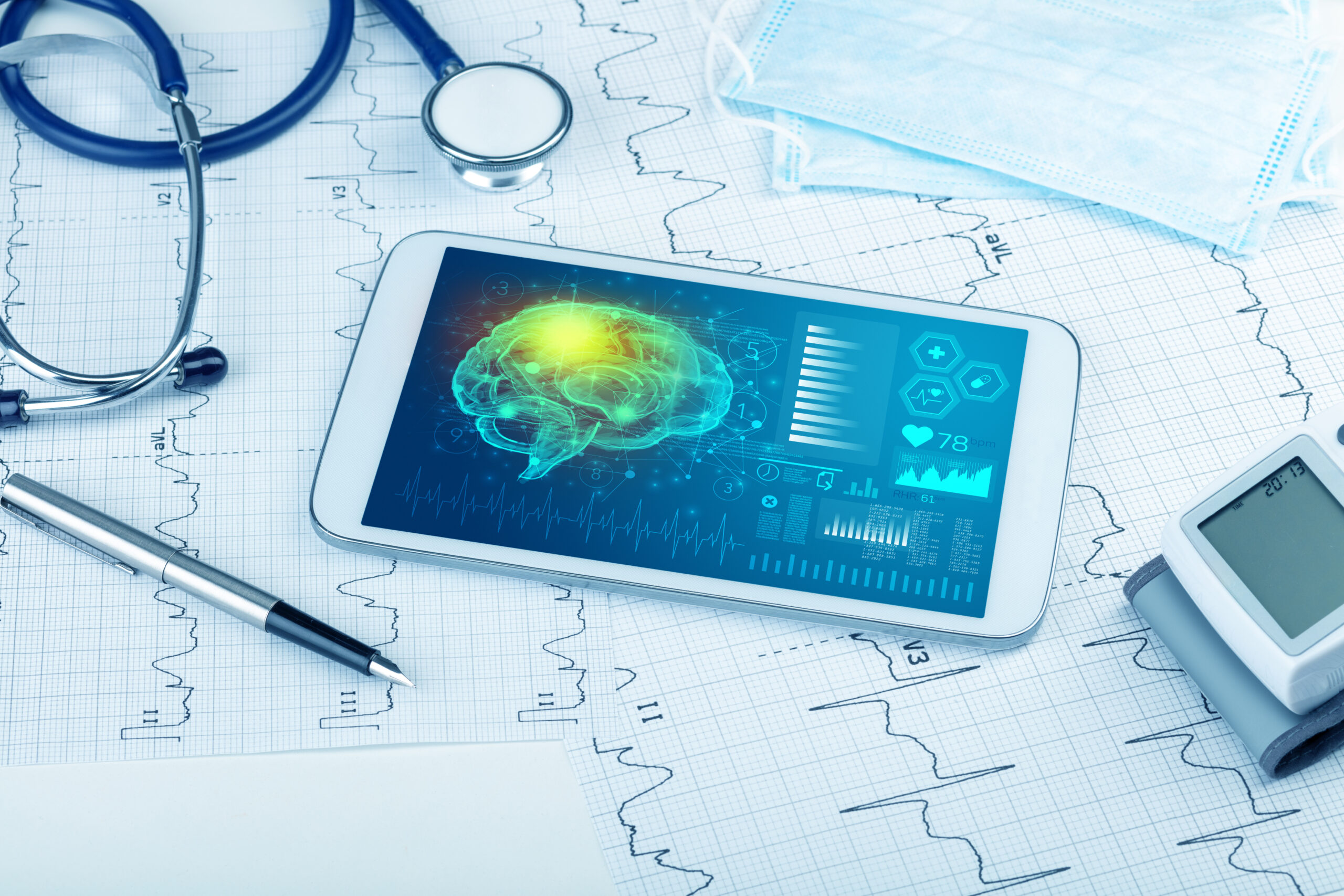The Growing Role of AI in Digital Health
Artificial Intelligence has evolved significantly since Christopher Strachey developed the first AI program in 1951 (Alowais 2023). In its early stages, AI was mainly a subject of academic study. The field took a major step forward in 1956 when John McCarthy hosted the Dartmouth Conference and introduced the term “Artificial Intelligence”. Today, AI is defined as the capability of a machine to imitate intelligent human behavior (Merriam-Webster dictionary). AI includes various techniques such as machine learning (ML), deep learning (DL), and natural language processing (NLP) (Alowais, 2023). Artificial intelligence in medical devices enhances human abilities across various functions using deep learning methods with neural networks. These applications encompass, but are not limited to:
- Disease prediction and detection
- Optimization of medical treatments
- Diagnostic assistance tools
- Classification and analysis of data for tracking potential disease outbreak
There is widespread optimism that AI applications can substantially improve various aspects of healthcare, especially diagnostics and treatment. As it is expected that AI tools will assist and ease the work of healthcare professionals rather than replace them, their market introduction brings substantial challenges, especially with the recent changes in European Union (EU) regulations.

(AI generated)
Aligning Innovation with the Regulations
Given the rapid development in AI field, efforts are made to provide relevant regulatory acts and guidelines for the evaluation of the emerging technologies, supporting safe and effective development, manufacturing and use of medical devices incorporating AI systems.
Until recently, medical devices were mainly regulated by industry-specific laws, such as the EU Medical Devices Regulation (MDR) (read our article on MDR here). The major change has been introduced with the first comprehensive legal framework for AI in Europe, known as the EU AI Act. Much like the influence of the EU General Data Protection Regulation (GDPR, Regulation (EU) 2016/679) on products or services involving personal data, the EU AI Act is expected to significantly shape the future of AI across various sectors. It applies to providers placing on the market or putting into service AI systems or general-purpose AI models in the Union, irrespective of whether those providers are located within the Union or in a third country. Despite being commonly referred to as an “Act,” it is, in fact, an EU Regulation (Regulation EU 2024/1689) directly enforceable as law across the EU. Therefore, the EU AI Act shares the same legal instrument as the EU MDR and EU In Vitro Diagnostic Medical Devices Regulation (IVDR).
Currently, no specific regulatory pathway has been established for AI-based medical devices. They should comply with the above-mentioned medical devices regulations: MDR or IVDR, and the relevant MDCG guidelines. Within the EU region, the organizations designated by the Competent Authorities (CAs) in EU countries, namely the Notified Bodies (NBs), are eligible to conduct conformity assessments and issue a Conformité Européenne (CE) mark for medical devices. This only applies to higher risk medical devices. For the low risk medical devices (class I), the manufacturer is solely responsible for the conformity assessment and CE marking. Nevertheless, the new EU AI Act aims to fill the gaps left by the MDR, providing some specific requirements.
Understanding the EU AI Act – Key Provisions for Medical Devices
The EU AI Act distinguishes between AI applications that present I) an unacceptable risk, II) a high risk, and III) a limited or minimal risk. In general, AI systems in regulated digital medical products, such as AI-enabled or machine-learning MDs, should be classified as “high-risk” AI systems. This is the most critical risk category for approved AI uses, which imposes a range of compliance requirements.
According to Article 6. of the Act, to qualify as high-risk AI systems, the product must be covered by the Union harmonisation legislation (e.g., MDR or IVDR), be subject to a third-party conformity assessment (e.g., NB), and meet either of the following two conditions:
- it is intended to be used as a safety component of the product;
- it is a product itself, e.g. Medical Device Software (MDSW).
In addition to the above, the AI systems referred to in Annex III of AI Act shall be considered high-risk systems.

The AI Act mandates the creation of a “technical documentation“, which is a familiar term for medical device manufacturers. For the AI system, this file aims to “demonstrate compliance with the requirements” for high-risk systems according to Article 11 of the AI Act. This applies even if the AI system is only a small component of the regulated digital product. The technical documentation for a high-risk AI system must be finalized and available before the system is “placed on the market or put into service” and must be regularly updated. Therefore, the MD manufacturers that already incorporate an AI system classified as high-risk devices should review the technical documentation of the device and check its compliance with Annex IV of the AI Act. Fortunately, the devices marketed or put into service before August 2nd, 2026, are not required to be in compliance with the AI Act unless significant changes are introduced to their design.
Specific changes will also be required in terms of establishing and maintaining a Quality Management System (QMS), which should be integrated with MDR QMS (ISO 13485) but incorporate the requirements of AI Act Article 17 within the design, development, verification, and validation of MD functions that apply to the AI system.
The new AI Act introduces a comprehensive framework for conformity standards, with requirements for an EU declaration of conformity, CE marking, and an EU database dedicated to high-risk AI systems. These requirements are similar to those already existing for medical devices.
Navigating Regulatory Challenges
The Al Act entered into force on August 2nd, 2024 after its publication in the Official Journal of the European Union (Article 113 of the Al Act). In general, provisions of the Act will be applicable two years after its entry into force (August 2nd, 2026), with some exceptions. High-risk Al systems under Article 6(1) of the Al Act will go into effect on August 2nd, 2027.
It should be underlined that the EU AI Act and Medical Device Regulations provide different risk-based classification rules that should be followed. The classification of an AI system as a high-risk one does not necessarily mean that such a product with a safety-related component of an AI system (or the AI system itself) is considered to be a ‘high-risk’ device in accordance with Medical Device Regulations. However, if a device is classified as a medium or high-risk class (typically IIa and above) under MDR and incorporates an AI system, the system would most probably be classified as high-risk according to the AI Act. The conformity assessment for such device should be carried out by a Notified Body, which is accredited both under MDR and the AI Act.
Low risk medical devices (class I) will not be significantly affected by the AI Act, unless the product represents a high-risk AI system according to Article 6 of AI Act. If it does, a Notified Body should be involved the conformity assessment in the future (since August 2nd, 2027).
As evident, the new regulatory landscape in Europe regarding AI-based products introduces changes for the process of medical device assessment and market introduction, if AI system is employed within the device.
If you need support in introducing such medical device to the market, SciencePharma will be glad to help you. Our experienced team will be happy to answer all your questions and assist in the development process. We have been supporting our clients in introducing medical devices to the market, conducting safety and performance testing, fulfilling Notified Body requirements, and much more. Do not hesitate to contact us.

